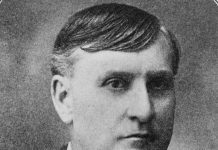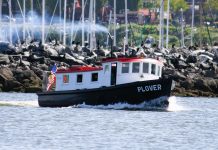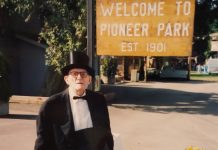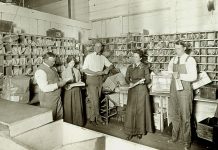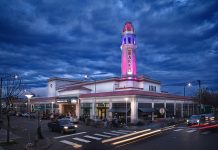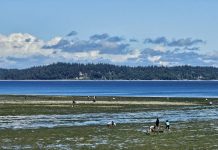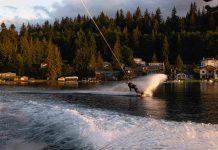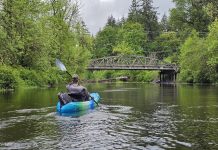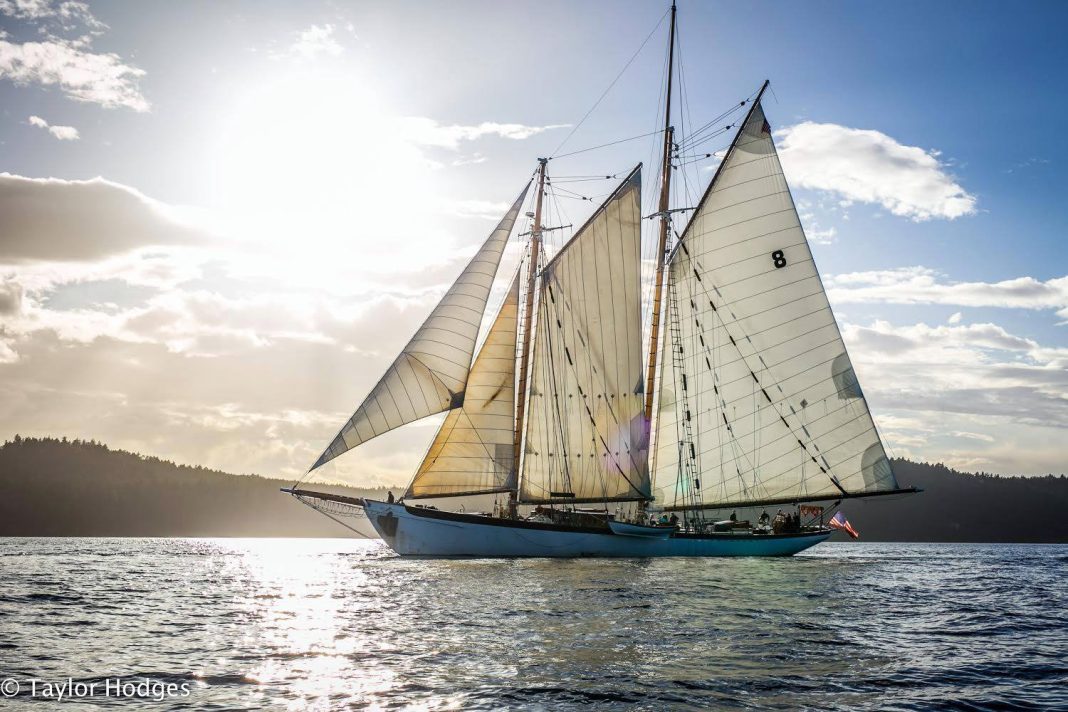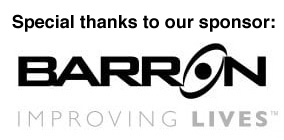On a beautiful spring or summer day, it’s not uncommon to glimpse the two-masted schooner Zodiac bobbing on the waters of the Salish Sea. For decades, it has conducted private charters and public cruises, transporting locals and tourists from the Bellingham Cruise Terminal into the splendor of the San Juan Islands and beyond.
In 2024, the Zodiac is celebrating its centennial with a special public open house on Sunday, May 19. In order to fully appreciate the present, it’s often helpful to learn about the past. Like many aged vessels, the Zodiac has had one heck of a voyage.
From Maine to California
The history of the Zodiac begins some 3,000 miles away from its Bellingham berth, on the coast of Maine.
It’s here, in the town of East Boothbay and the Hodgdon Brothers Shipyard, that the wooden windjammer was constructed from the designs of renowned yacht builder William H. Hand, Jr. The first public mention of the ship’s pending construction comes in a May 1923 Boston Globe article.
Clocking in at 160 feet long, with a 127-foot long deck and a beam (maximum width) of just over 25 feet, Zodiac was originally built for Robert Wood Johnson II and John Seward Johnson I, the sons and heirs of Johnson & Johnson co-founder Robert Wood Johnson I.
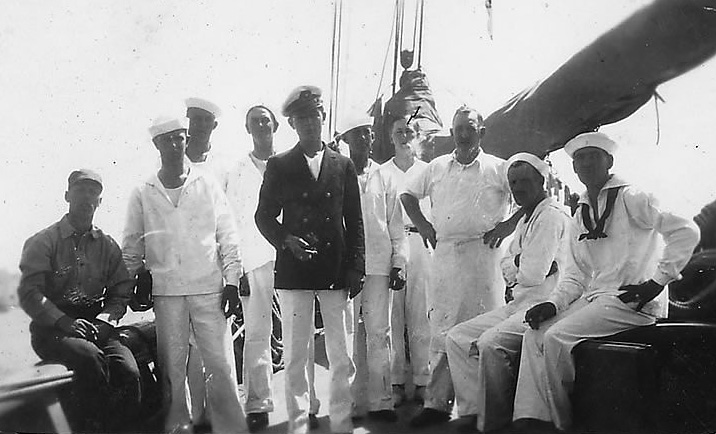
When their father died in 1910, the two sons — then still teenagers — inherited a massive fortune before going on to grow the family company into an even more lucrative enterprise than it already was. The Johnsons used the Zodiac to sail along the East Coast, reaching as far north as Canada’s Labrador region in 1925. They also entered the vessel in a transatlantic race from New York to Spain in 1928; the boat finished fourth.
In its early years, the Zodiac was described as having five staterooms and a main cabin, with an Atlas Diesel engine and plenty of sails, according to a 1931 sale notice.
In 1929, the ship was purchased by Montreal’s Arthur J. Nesbitt, a banker who renamed the schooner Airdeane after his two sons, Aird and Deane. Nesbitt docked the ship in Nova Scotia and sailed Canadian waters in the Labrador region for two years, and also cruised the West Indies.
According to an article written by Nesbitt’s grandson, the vessel had electric refrigeration, a heating unit and — perhaps most impressively — a grand piano. In 1931, Nesbitt donated Airdeane to the Grenfell Mission, an organization that gave medical and educational services to those in Labrador and Northern Newfoundland.
Sometime that same year, it was purchased by the San Francisco Bar Pilot Association and renamed the California. It’s unclear how the vessel reached the Pacific, though the Panama Canal seems likely, if it was sailed.
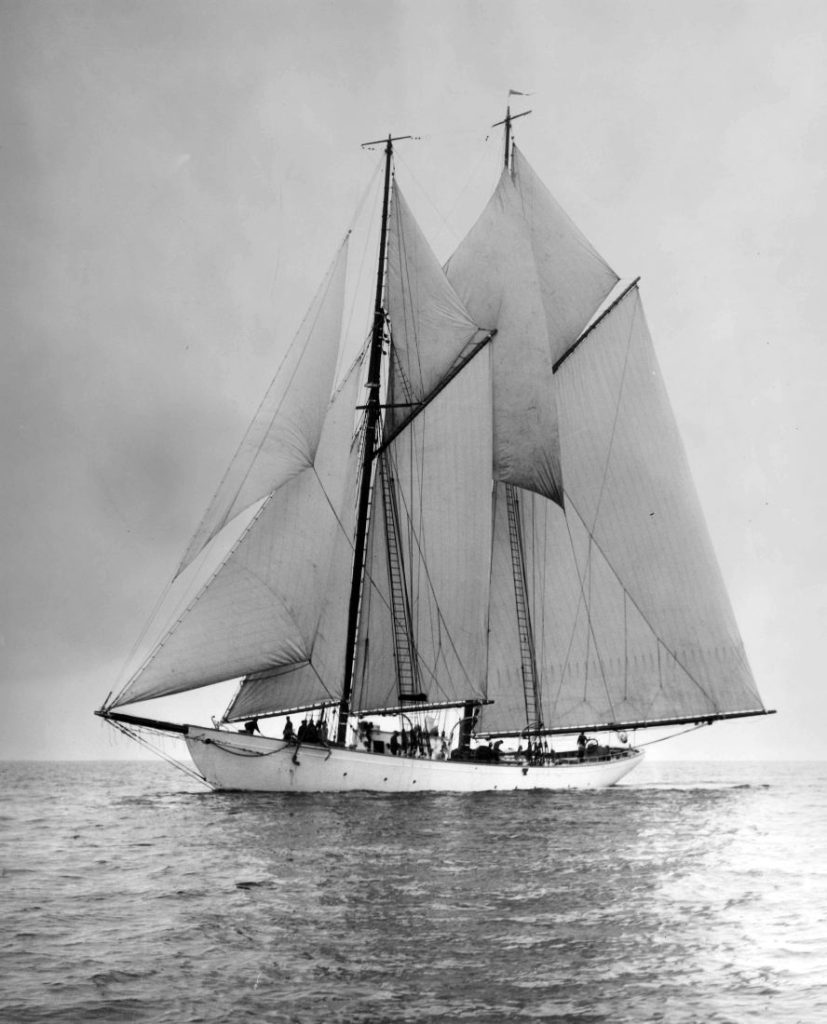
Bellingham-Bound
The association substantially remodeled the California, putting the ship into service as its largest-ever pilot schooner. The ship accompanied larger vessels through Bay Area waters, and had her bow sheared off in collisions three separate times according to a National Register of Historic Places document.
In 1972, California was retired as the last sailing vessel to ever serve as a pilot ship in the United States. Six years later, a group of sailing enthusiasts bought the boat and formed the Vessel Zodiac Corporation, working to restore the again-re-named schooner to its former glory.
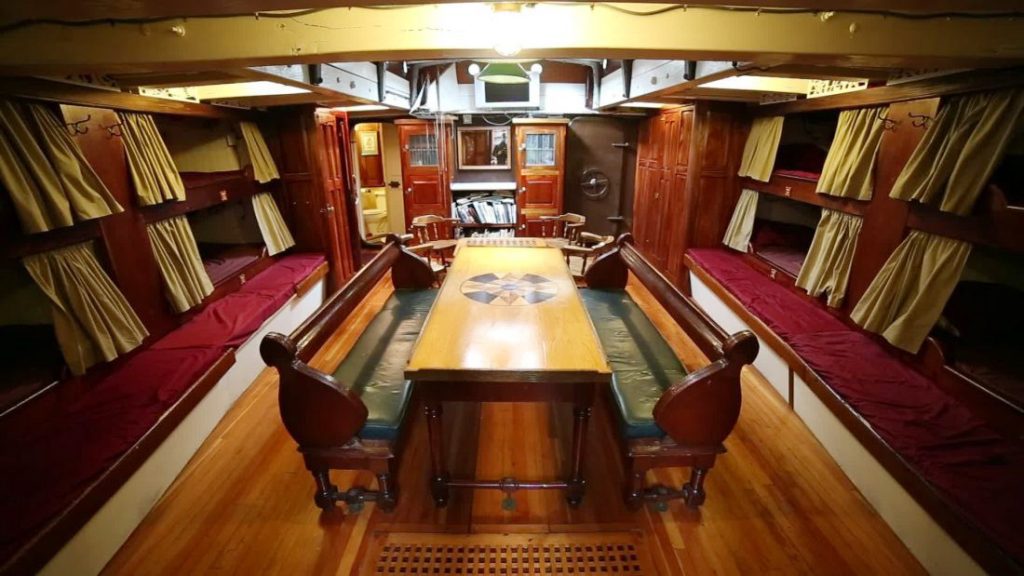
By early 1982, the Zodiac was being held at Seattle’s Lake Union Dry Dock — the same year it was added to the National Register of Historic Places. It found its way to Bellingham in the early 1990s, where it has remained since. The vessel is owned by the Bellingham’s Mehrer family, which been part of the ship’s history since the corporation was formed in 1978.
Today, Zodiac is among the last schooners of its kind, and is the largest in Washington. It’s powered by a 400-horsepower Caterpillar diesel engine, features a mainmast over 12 stories high, and has the West Coast’s largest working mainsail.
Lovingly maintained by volunteers, Zodiac’s interior is one of varnished mahogany, oak, and teak, combining 1920s elegance with modern comfort. There are modern appliances and three restrooms, two of which feature hot showers.
Zodiac can carry 49 passengers on day sails, and can bunk 26 people for overnight trips. The ship’s galley frequently offers meal service, including weekend evening salmon dinners. The ship’s 3- to 10-day cruises operate from May to October, with three-hour day trips through the end of September. It’s also bookable for family reunions, corporate retreats, field trips, and even weddings.

Bob Boroughs, the Zodiac’s marketing director, says vessel’s connection to history is palpable when on-board.
“Everything on-board still functions the way it was originally built 100 years ago,” he says, “as far as sailing the boat.”
Celebrate the Centennial
On May 19 from 11 a.m. to 4 p.m., Zodiac’s birthday open house will be in full swing at the Bellingham Cruise Terminal. Ship tours will be available, as will a Village Books pop-up store with book signings by local authors Tom Crestodina and Todd Warger.
Good Time Girls’ Kolby LaBree, a Bellingham historian, will run a 1920s Bellingham slideshow, and the Schooner Martha’s Robert d’Arcy will interview Captains Tom and Calen Mehrer on the Zodiac’s restoration and future, with time for audience questions.
For more information, please visit the ship’s website.






